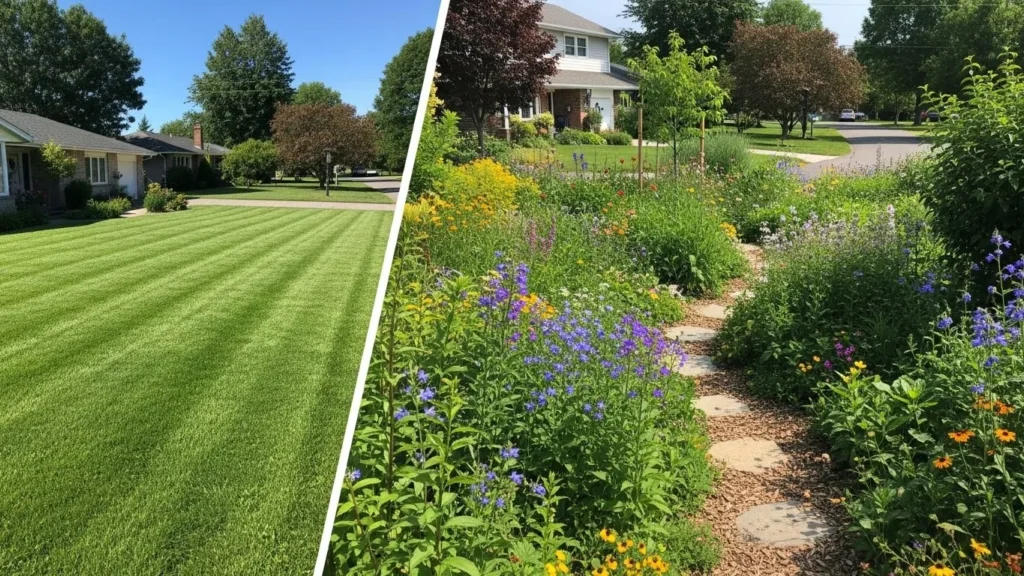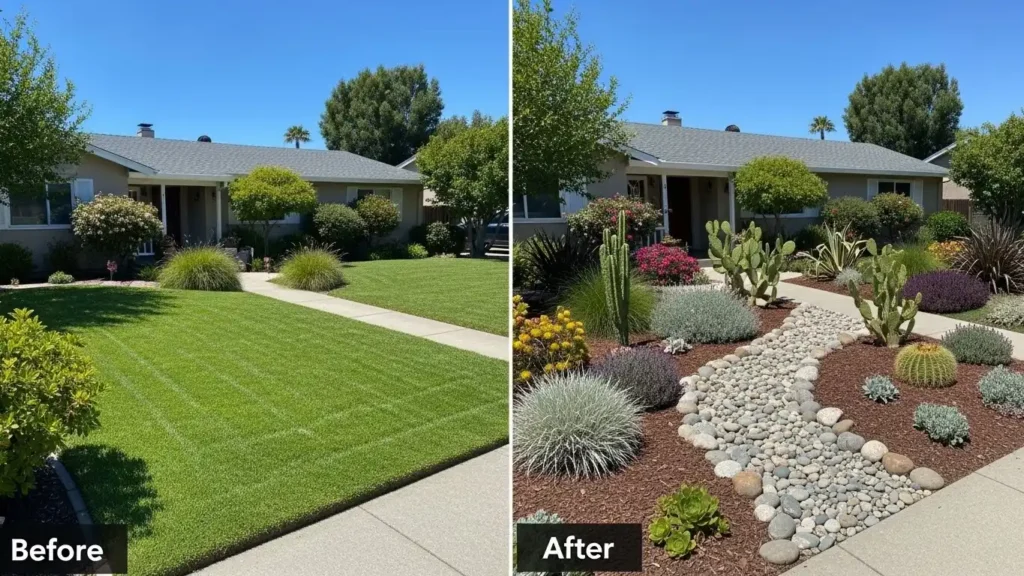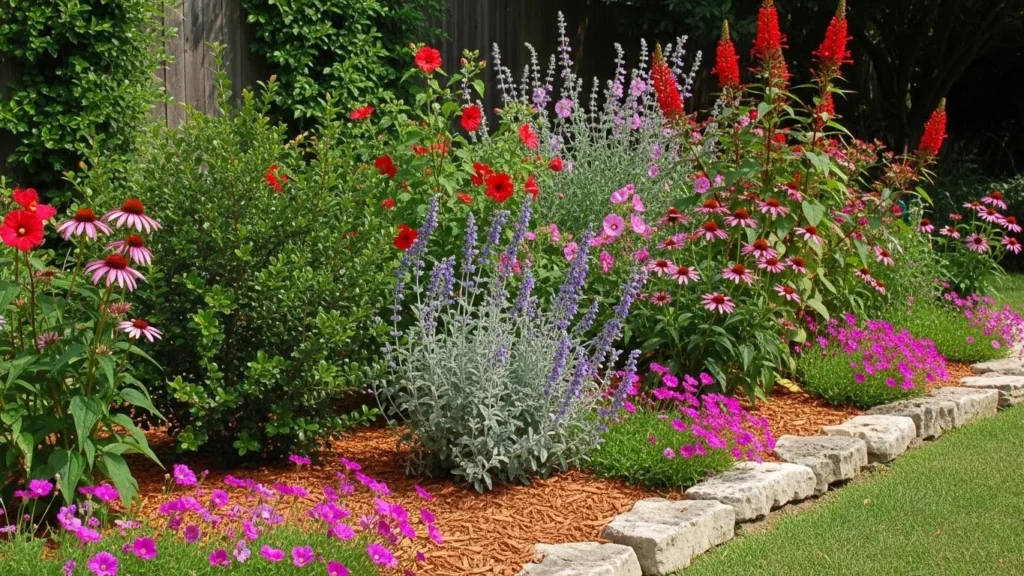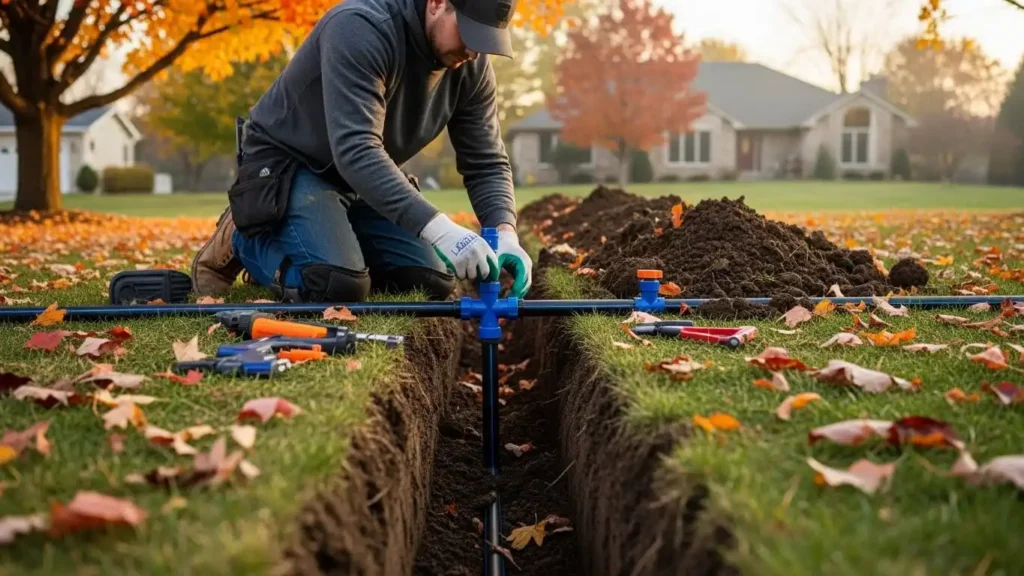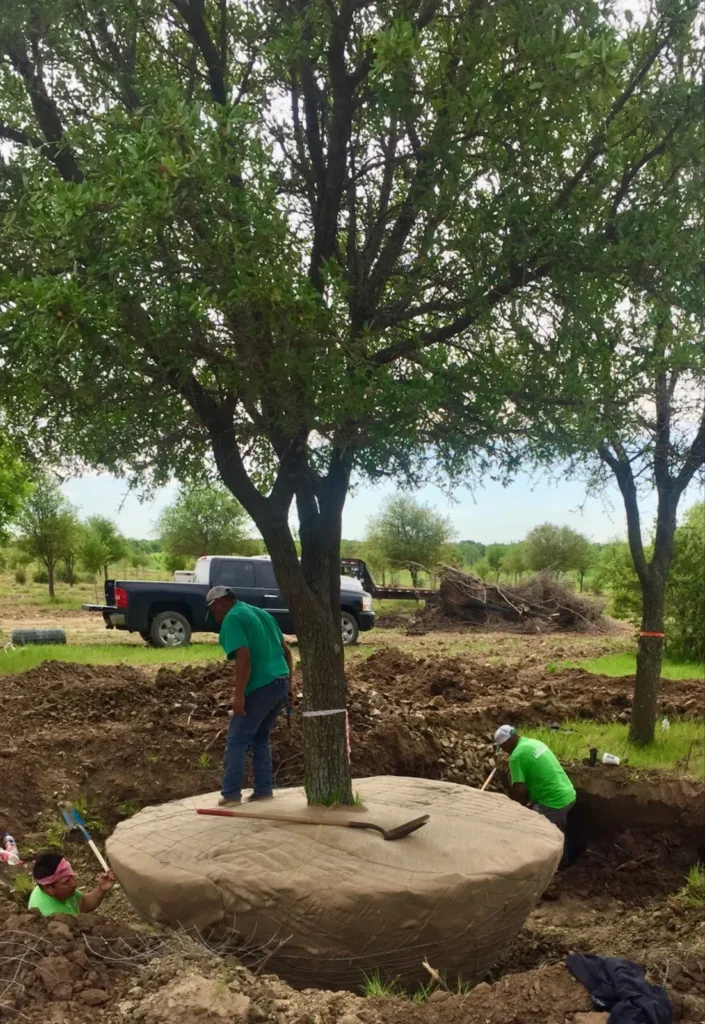Table of Contents
ToggleIntroduction — The Smart Case for Native Plants
Native plants—species that evolved in your local region—are the backbone of truly water-wise landscapes. They are adapted to historical rainfall, seasonal temperatures, and local soils. That means once established, they often need far less supplemental irrigation and considerably less maintenance than non-native ornamentals or thirsty turf. The result: you use less water, pay less, and enjoy a healthier landscape.
How Native Plants Reduce Water Use
Adaptation to Local Climate
Native plants evolved under local rainfall patterns, heat, and cold cycles. They are naturally timed to your region’s climate, allowing them to thrive with less irrigation.
Deep and Efficient Root Systems
Many natives grow deeper roots than introduced species. These deep roots access moisture stored far below the surface, helping plants survive dry spells without supplemental watering.
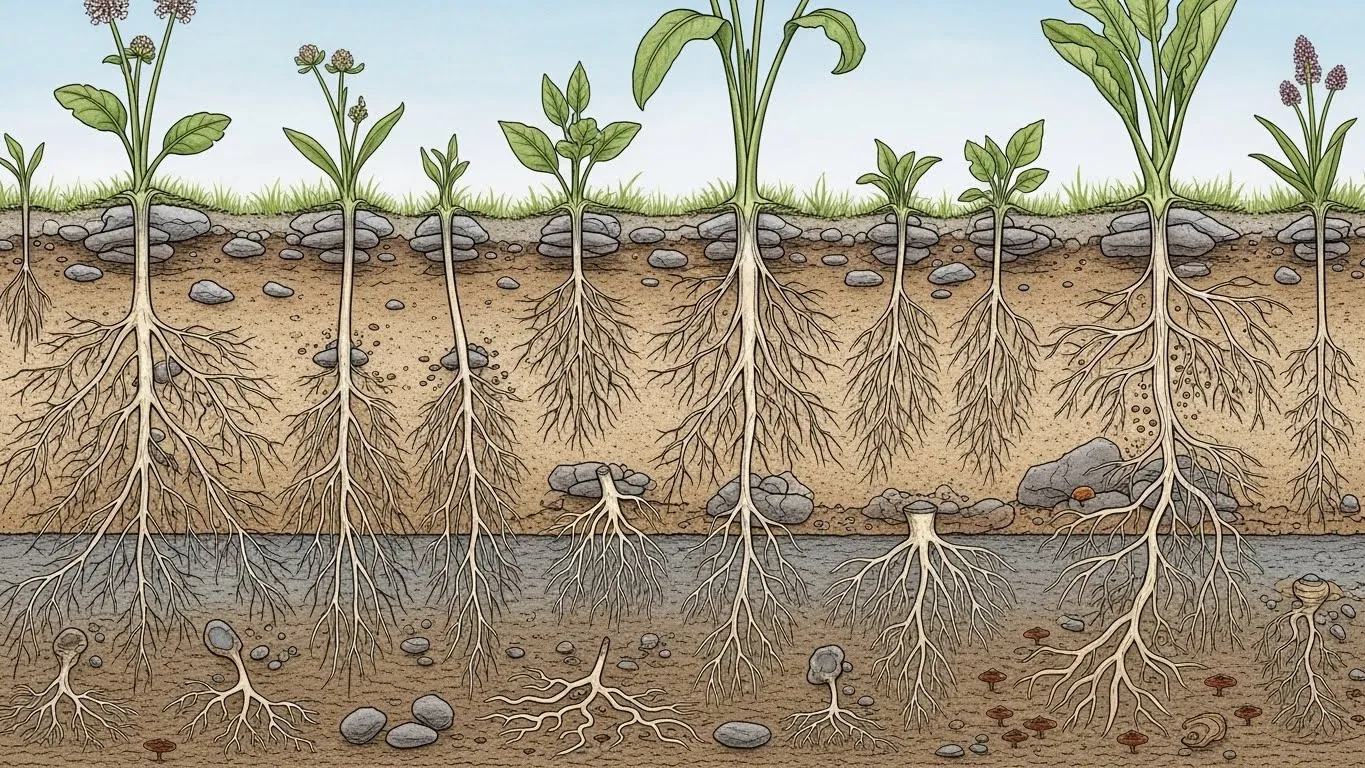
Deeper roots access stored moisture and reduce irrigation needs.
How Native Plants Save Money
There are several direct and indirect ways native plants reduce your landscape bill.
Lower Irrigation Bills — A Worked Example
Assumptions: A 1,000 sq ft lawn needing 1 inch of water per week for a 20-week season, with water costing $5.00 per 1,000 gallons.
- Weekly Water Volume: 1,000 sq ft × 1 inch of water = ~623 gallons per week.
- Seasonal Volume: 623 gallons/week × 20 weeks = ~12,460 gallons per season.
- Savings with Natives: A 50% reduction in irrigation needs (a conservative estimate) saves ~6,230 gallons.
- Dollars Saved: At $5.00/1,000 gallons, this equals approximately $31.15 saved per season on water alone for that 1,000 sq ft area.
Less Maintenance: Mowing, Fertilization, and Pest Control
- Mowing: Replacing turf with native beds eliminates mowing costs (fuel, equipment, or service fees). For a large lawn, this can save hundreds of dollars annually.
- Fertilizer & Chemicals: Natives thrive in local soils and typically require no fertilizer and far fewer pesticides.
- Replacements: Greater resilience to local pests and diseases means lower replacement costs for failed plants.
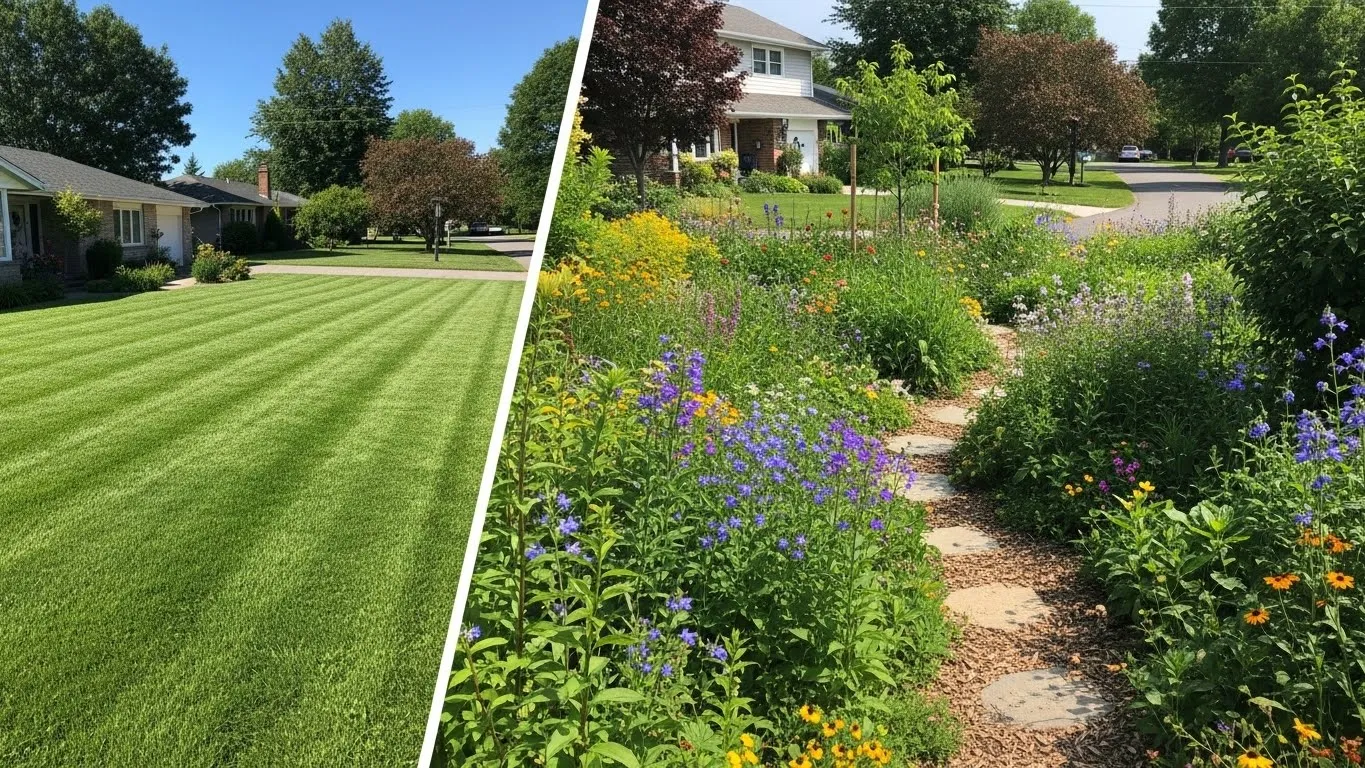
Replacing thirsty turf with native plants lowers water use and maintenance.
Increased Property Value and Long-Term ROI
Well-designed native landscapes are attractive, low-maintenance, and sustainable—features that modern buyers increasingly value, potentially improving resale value.
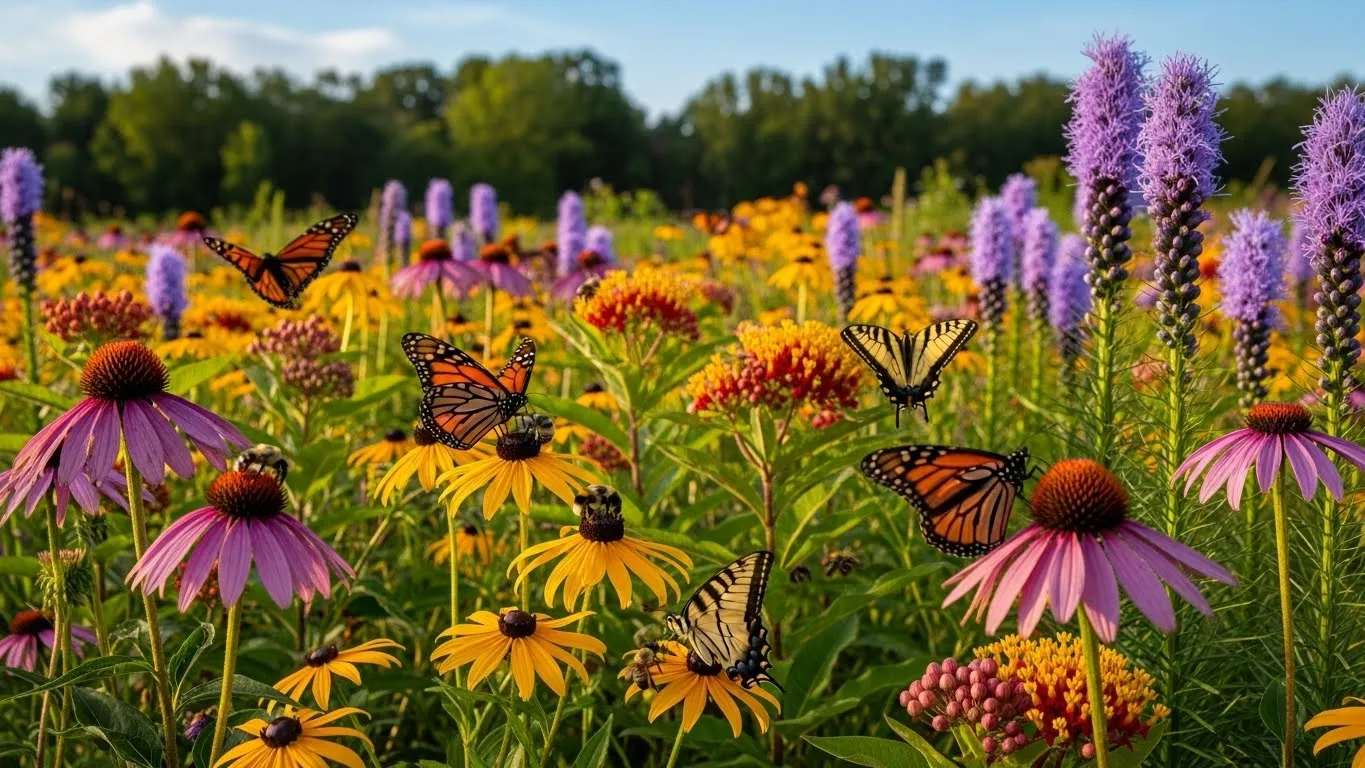
Native gardens support pollinators and deliver ecological value.
Design and Installation Tips to Maximize Savings
- Hydrozone: Group plants by similar water needs to avoid overwatering drought-tolerant species.
- Use Drip Irrigation: Drip systems deliver water directly to the root zone with high efficiency and minimal evaporation.
- Mulch Heavily: A 2-3″ layer of organic mulch reduces evaporation, moderates soil temperature, and suppresses weeds.
- Establish Well: Water new plants regularly for the first 12-24 months. Once established, you can significantly reduce frequency.
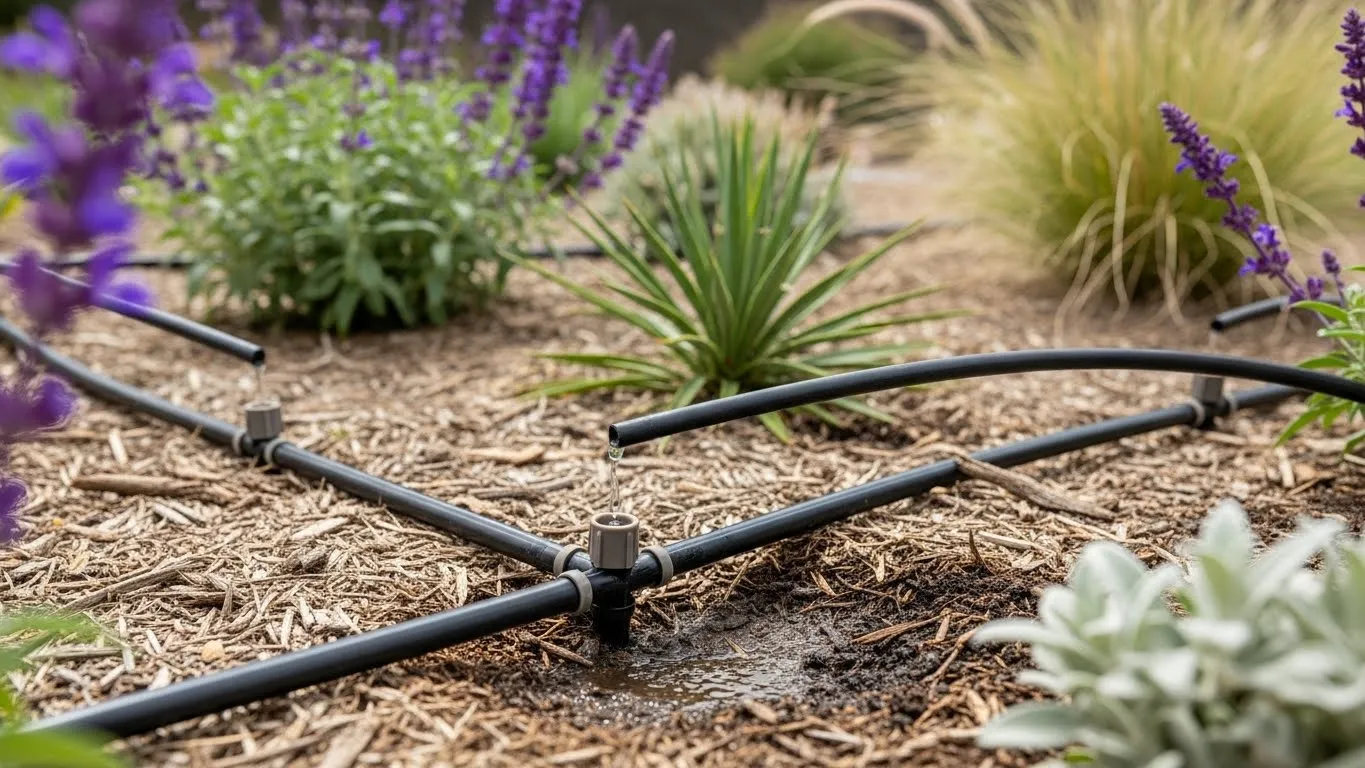
Drip systems maximize efficiency during the establishment phase.
FAQ
How much water can I realistically save?
Results vary, but established native beds commonly reduce supplemental irrigation by 30-60% versus traditional lawns.
How long until savings show up?
Irrigation savings begin as you reduce watering over the first 1-3 years. Savings on mowing and other maintenance are immediate after converting a lawn area.
Are natives more expensive to install?
Initial costs can be similar to traditional landscaping, but the long-term savings from reduced water and maintenance often lead to a payback within a few years.
Conclusion & Call to Action
Native plants are a practical, science-backed route to cutting water use and saving money while creating beautiful, resilient, wildlife-friendly landscapes. With careful selection and proper installation, you’ll enjoy a garden that looks great, costs less, and performs better year after year.
Written by Let Us Do It Landscaping (LUDI).
Ready for a lawn-to-native conversion? Contact us for a quote!
